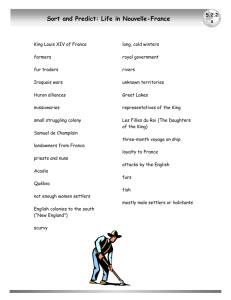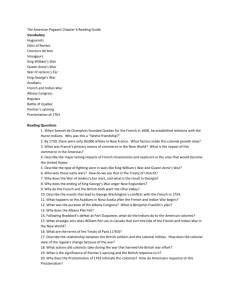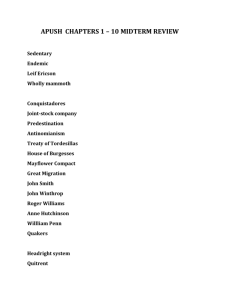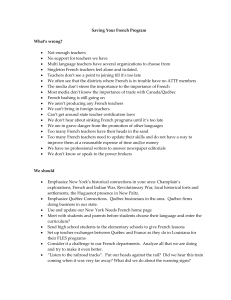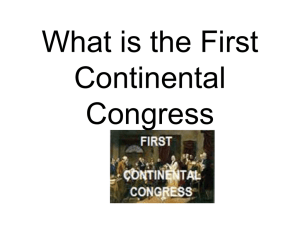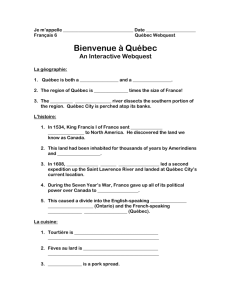2) Treaty of Paris 1763
advertisement
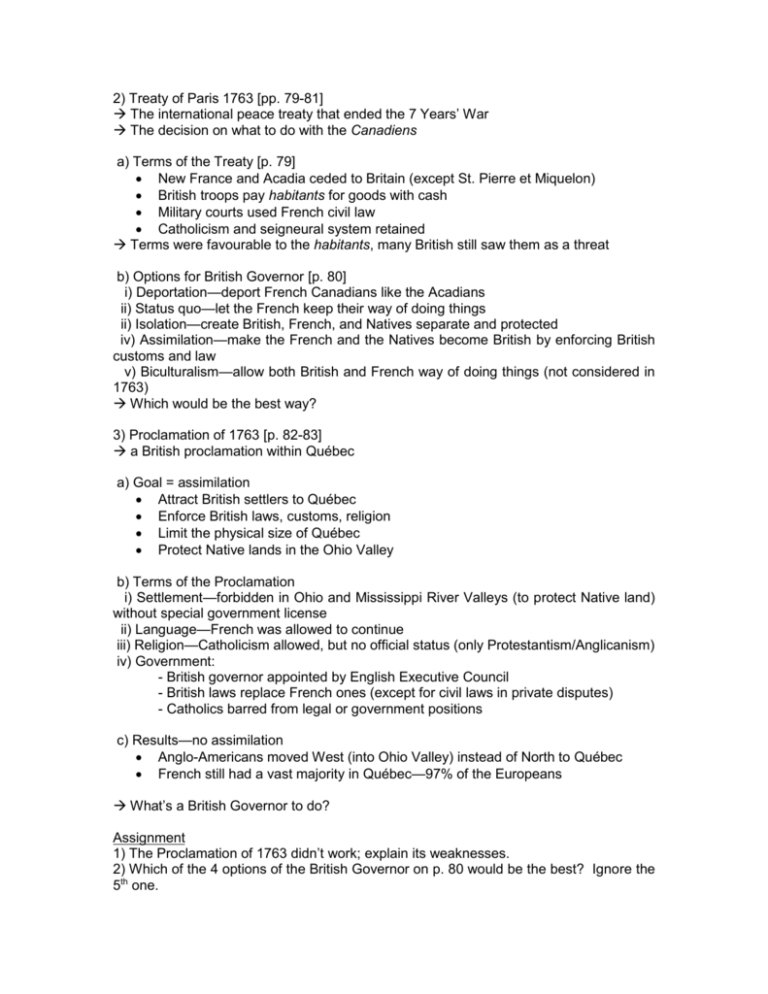
2) Treaty of Paris 1763 [pp. 79-81] The international peace treaty that ended the 7 Years’ War The decision on what to do with the Canadiens a) Terms of the Treaty [p. 79] New France and Acadia ceded to Britain (except St. Pierre et Miquelon) British troops pay habitants for goods with cash Military courts used French civil law Catholicism and seigneural system retained Terms were favourable to the habitants, many British still saw them as a threat b) Options for British Governor [p. 80] i) Deportation—deport French Canadians like the Acadians ii) Status quo—let the French keep their way of doing things ii) Isolation—create British, French, and Natives separate and protected iv) Assimilation—make the French and the Natives become British by enforcing British customs and law v) Biculturalism—allow both British and French way of doing things (not considered in 1763) Which would be the best way? 3) Proclamation of 1763 [p. 82-83] a British proclamation within Québec a) Goal = assimilation Attract British settlers to Québec Enforce British laws, customs, religion Limit the physical size of Québec Protect Native lands in the Ohio Valley b) Terms of the Proclamation i) Settlement—forbidden in Ohio and Mississippi River Valleys (to protect Native land) without special government license ii) Language—French was allowed to continue iii) Religion—Catholicism allowed, but no official status (only Protestantism/Anglicanism) iv) Government: - British governor appointed by English Executive Council - British laws replace French ones (except for civil laws in private disputes) - Catholics barred from legal or government positions c) Results—no assimilation Anglo-Americans moved West (into Ohio Valley) instead of North to Québec French still had a vast majority in Québec—97% of the Europeans What’s a British Governor to do? Assignment 1) The Proclamation of 1763 didn’t work; explain its weaknesses. 2) Which of the 4 options of the British Governor on p. 80 would be the best? Ignore the 5th one.


